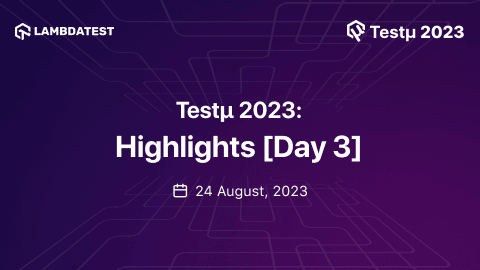Let’s Play Rhetoric for All Things Testing [Testμ 2023]
LambdaTest
Posted On: August 23, 2023
![]() 1455 Views
1455 Views
![]() 13 Min Read
13 Min Read
Prepared for the journey where words became the most powerful tools, the session “Rhetoric: The Public Speaking Game – All Things Testing Edition” offered an immersive experience, engaging participants with many thought-provoking topics related to testing, all within an exciting framework.
Maaret’s game combined public speaking challenges with the testing theme. She also covered the benefits of building and engaging in this game, encouraging participants to tap into their creativity and adaptability and fostering effective communication. The game aimed to give the participants a deeper understanding of the various forms of testing and its multiple dimensions.
About the Speaker
Maaret Pyhäjärv is a development manager at Vaisala. Besides testing, she is also a programmer, speaker, author, and community facilitator. Maaret has been awarded the most prestigious testing Influential Agile Testing Professional Person 2016 (MIATPP) and EuroSTAR Testing Excellence Award (2020), Tester Worth Appreciating (2022), and selected as Top-100 Most Influential in ICT in Finland 2019-2022.
If you couldn’t catch all the sessions live, don’t worry! You can access the recordings at your convenience by visiting the LambdaTest YouTube Channel.
Session Overview
Before starting with rhetoric, Maaret wanted the audience to begin with a much lighter version of the game called Presentation Karaoke. She encouraged the audience to suggest topics for extempore talks and emphasized that everyone has valuable experiences and ideas to share.
The session aimed to frame teaching as sharing lessons one wished they had heard a few years ago.
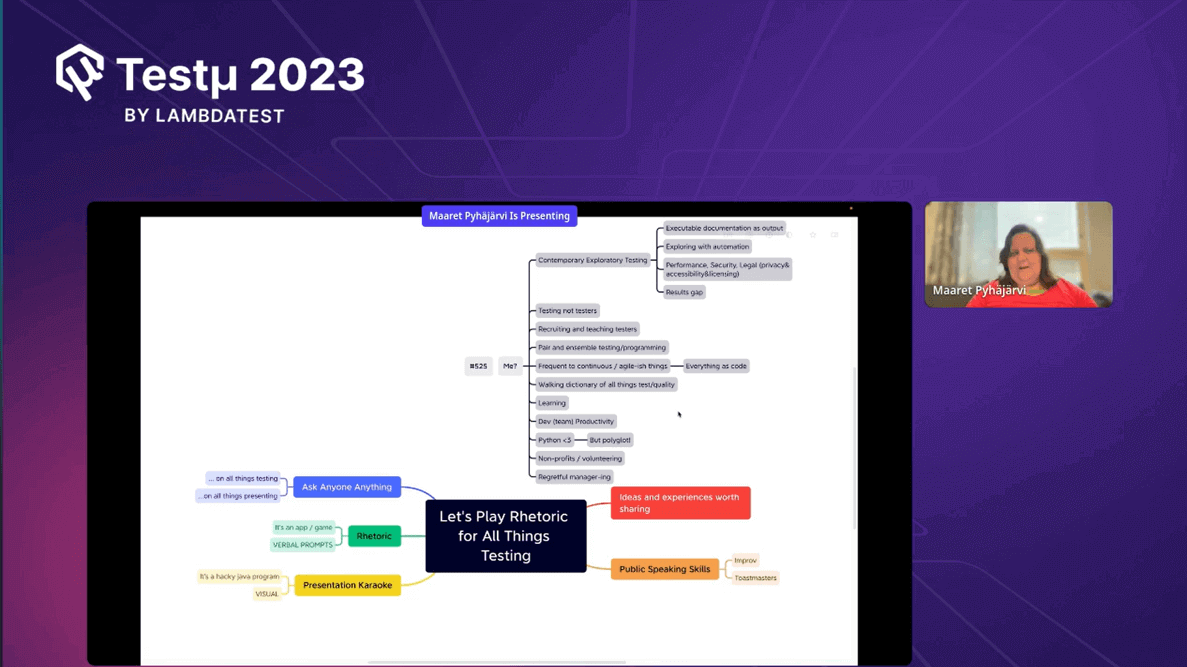
Maaret talked about the two forms of presenting, rehearsed and improvisational, and referenced her experience with Toastmasters, where participants speak on various topics using prompts. The session focused on improvisational speaking based on personal experiences, aligning with the idea that everyone’s voice matters.
Getting Started with Presentation Karaoke
In this game, volunteers would provide topics for Maaret to speak about improvisationally so that she could explain the game. She mentioned that the game involved using a Java program she had developed sometime earlier, which displayed slides related to testing, agile, management, and more. The program would show slides individually until a blank screen appeared, indicating her turn to speak. As the slide continued to change, the volunteer would speak in a manner that relates to the slide.
Further, Maaret wanted the audience to choose another topic for the first participant. This game aimed to create impromptu talks related to testing and various topics within software development and quality, thereby improving public speaking.
Demo
The session host, Manoj Kumar, chose a topic for Maaret to speak on: ‘My Favorite Language.’ The game began with a blank slide followed by five more random slides. Here is the slide-wise breakdown of what Maaret said:
Blank Slide: Maaret introduced herself, saying, “Hello, everyone. My name is Maaret, and today I will talk to you about my favorite language.”
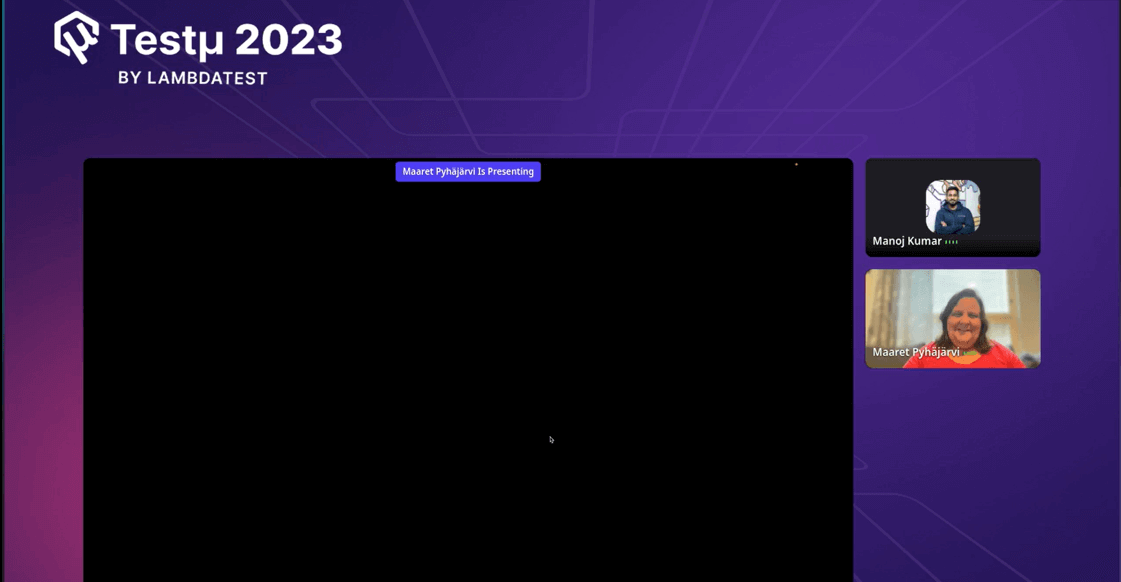
Slide 1: Further, she discussed her favorite language, emphasizing that it challenges her to learn ‘more’ and stretch her capabilities. She hinted at having a specific language in mind but didn’t reveal it.
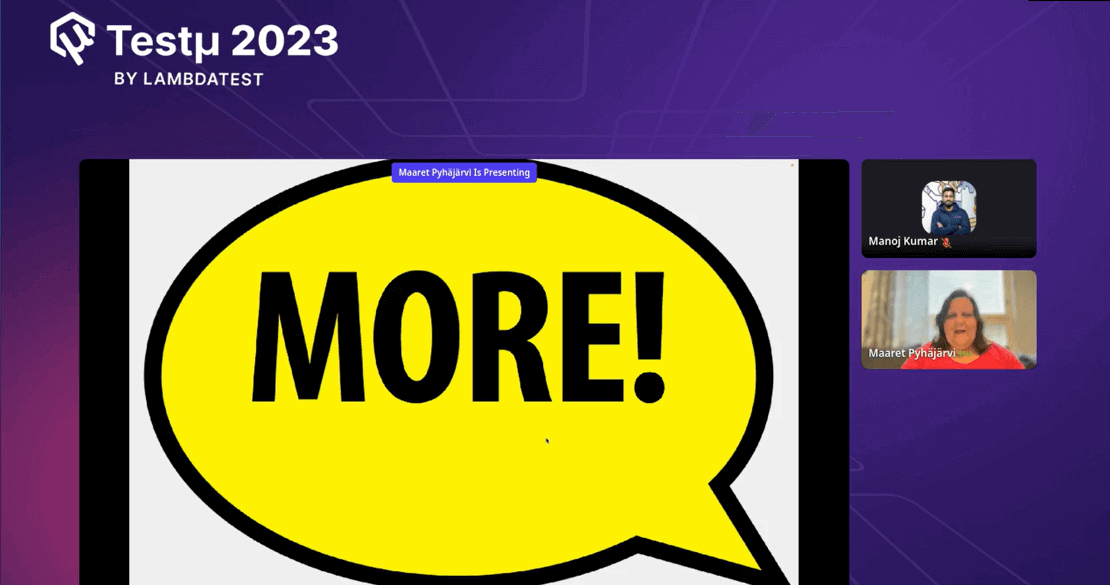
Slide 2: Maaret talked about why the language is her favorite. She mentioned that it reads almost like English, making it easy to teach and learn. She pointed out that it has saved her a ‘lot of time’ over the years and agreed that she’s considering more aspects of the language.
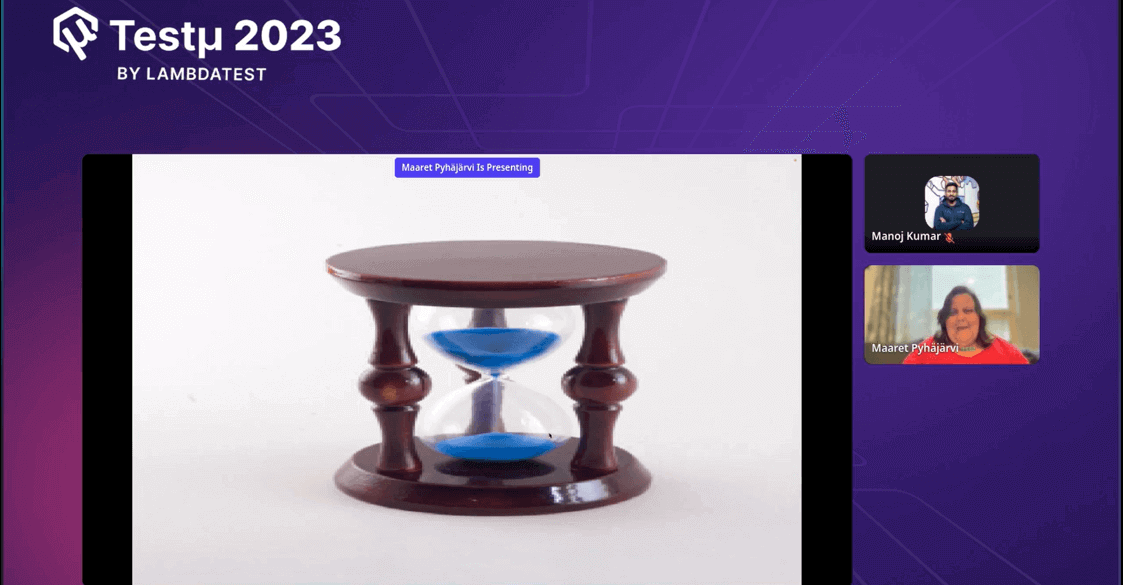
Slide 3: She discussed how the language enables her to automate complex processes, particularly around data processing. Maaret also hinted that the language can be used across various ‘testing stages’ and mentions monitoring as one of her favorites.
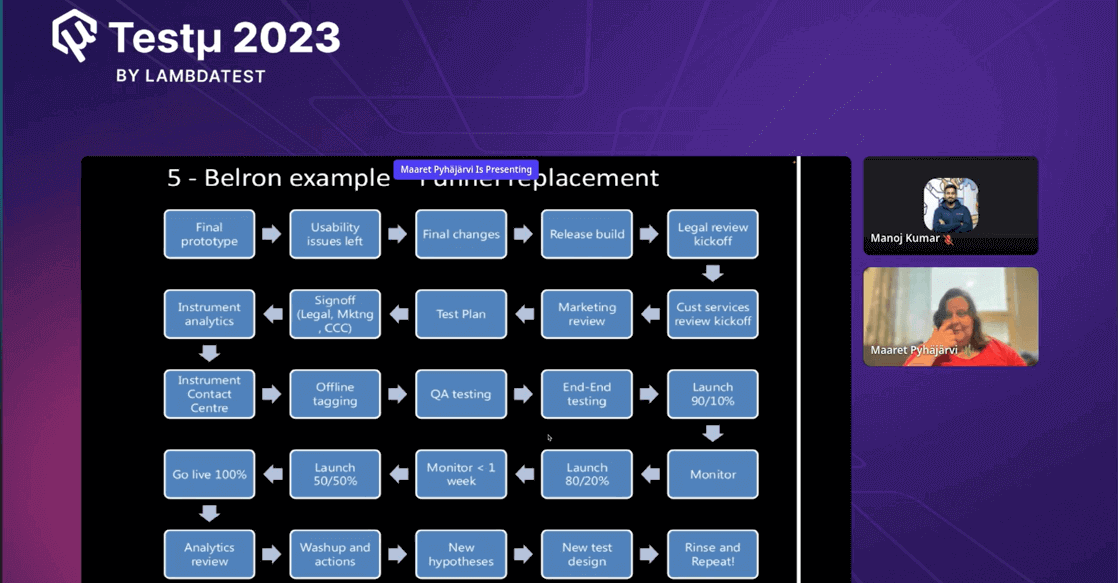
Slide 4: Maaret revealed that her favorite language is Python. She explained that Python’s written tests serve as executable specifications, providing clear agreements on how things work and allowing her to identify changes and ‘find the responsible person’ easily.
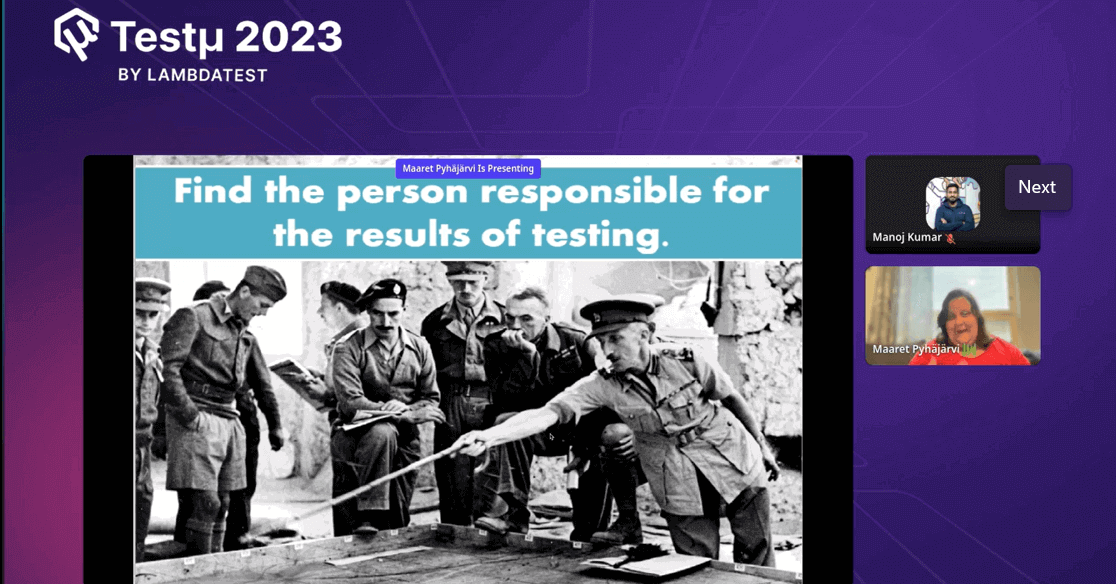
Slide 5: Maaret reiterated her preference for Python and her satisfaction with working with it. She believes that while other languages might not be as great for her, everyone can find ‘pride in their choices’ and adapt to various languages.
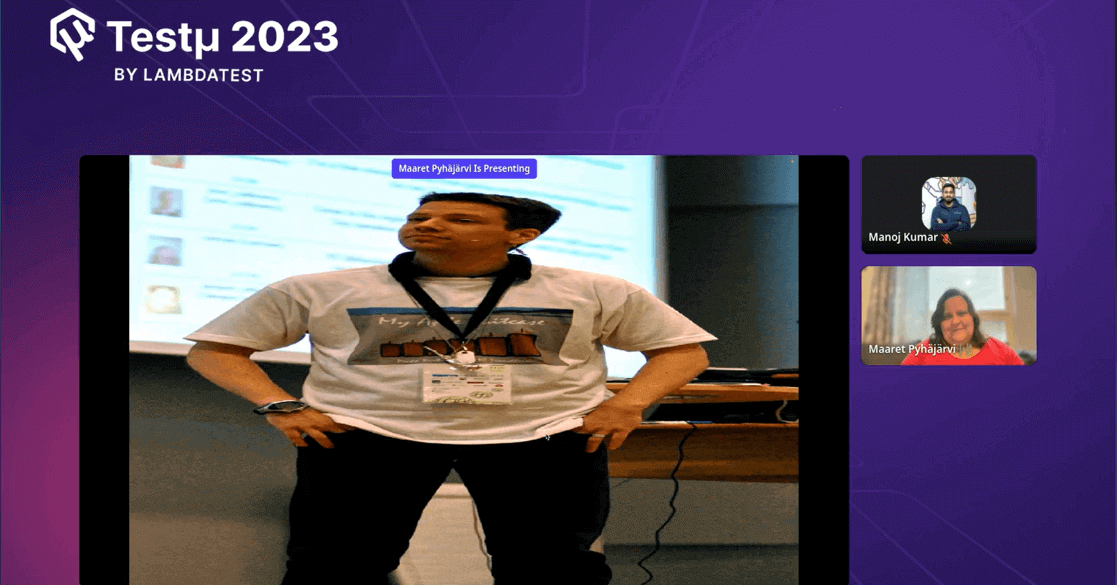
While Maaret gave the audience a simple demo of the game, it was observed that she maintained an informal and unscripted tone, sharing her thoughts on her favorite language and its impact on her work. She showcases the impromptu nature of the presentation while also drawing on her experience to keep herself comfortable during the talk.
Let’s Play Presentation Karaoke!
Maaret and Manoj picked up a volunteer from the audience to play the game- Saniya Gazala. Saniya chose a topic for herself- “Career Journey from being a Manual Tester to an Automation Tester.” Maaret displayed the blank slide, and Saniya started the game by briefly introducing herself.
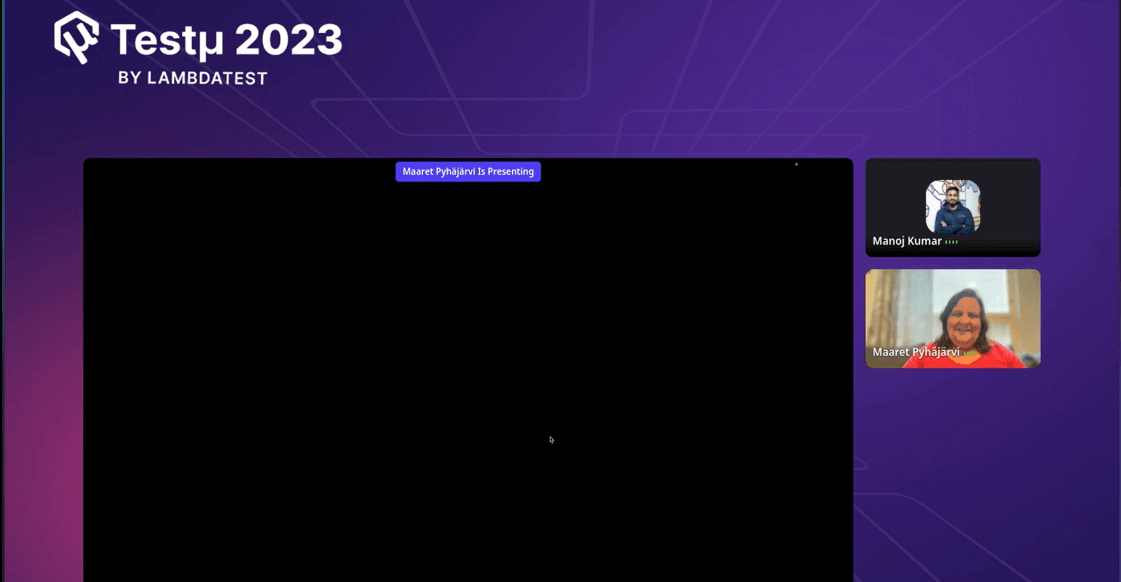
Blank Slide: She introduced herself as a manual tester with two years of experience. She reflected on her journey transitioning from manual testing to automation, sharing her challenges while learning new languages. She described her experience at her current organization and her passion for testing.
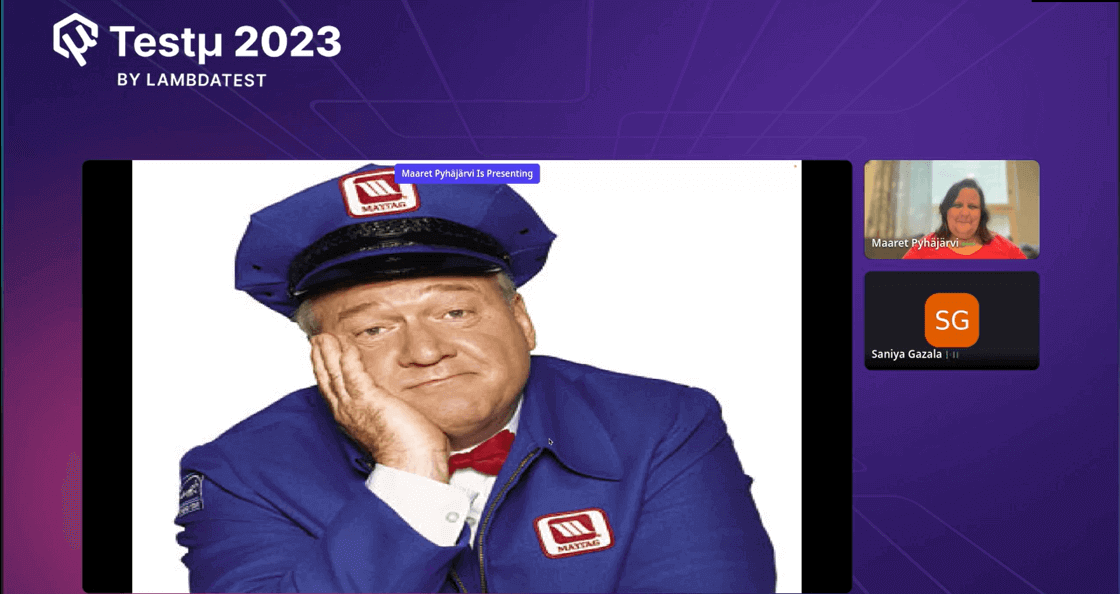
Slide 1: Saniya explored the theme of choosing a career path. She mentions the ‘uncertainty and the confusion’ many face after graduation, searching for an area of expertise. She shared her experience of finding her career path in testing after working on various technologies.
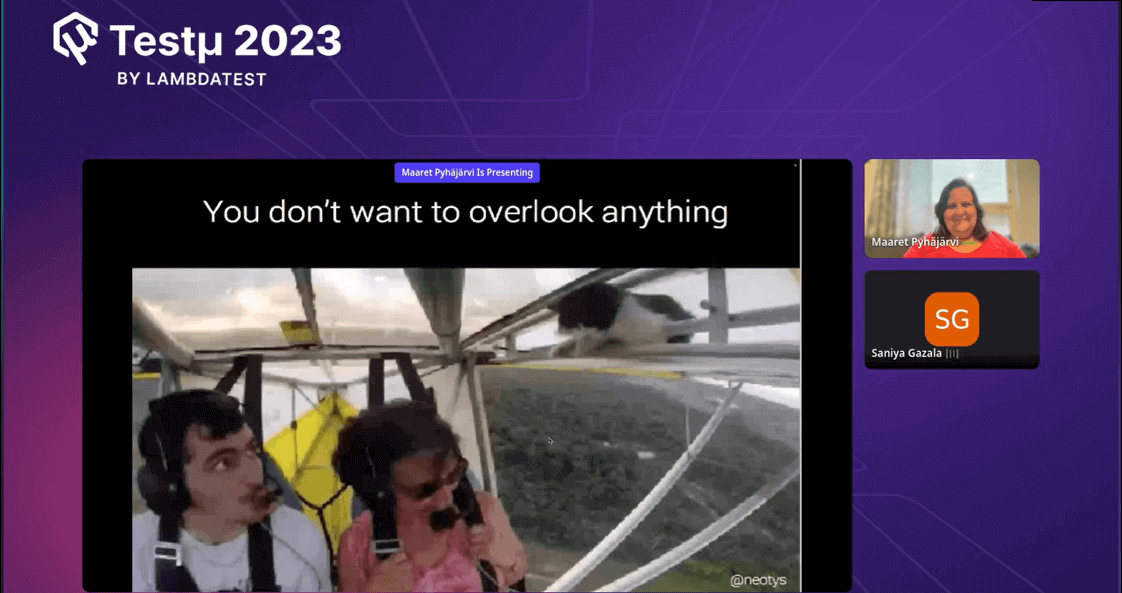
Slide 2: She talked about how her career ‘took off’ once she identified her path and what she could achieve. According to her, this slide highlighted the moment she gained clarity on her direction.
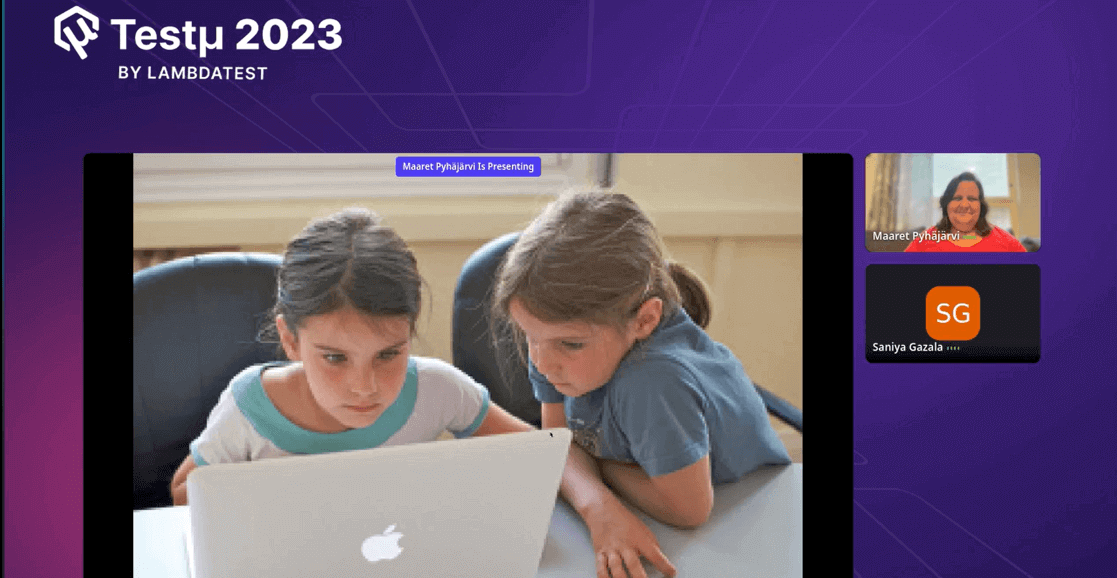
Slide 3: With this slide, Saniya emphasized the importance of ‘continuous learning.’ She believes learning is an ongoing process that extends throughout one’s life. She explained that learning and experience go hand in hand, leading to personal growth.
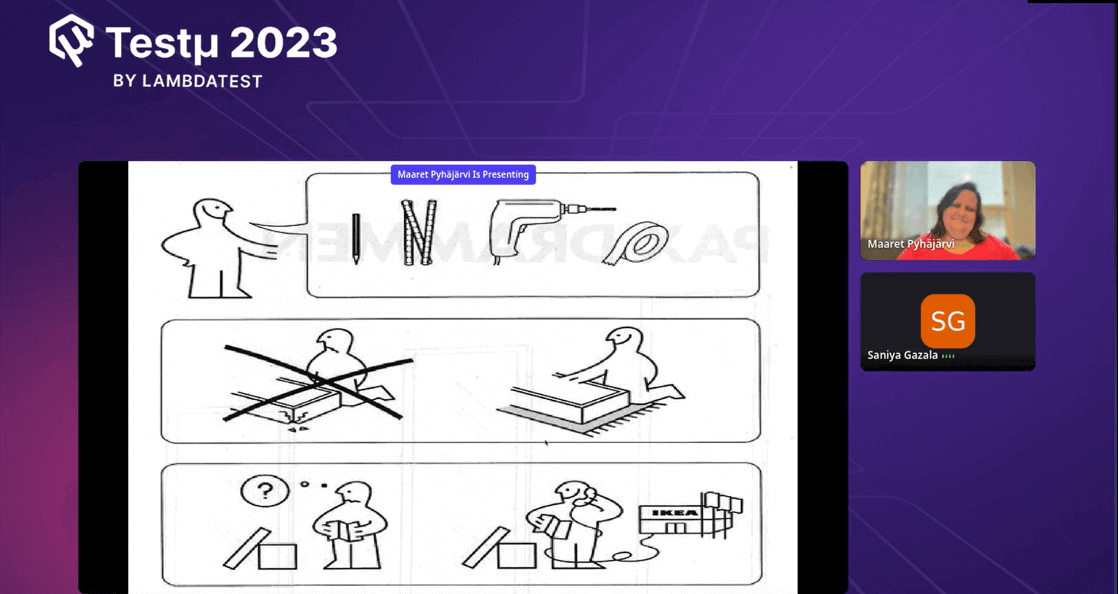
Slide 4: According to Saniya, this slide reminded her of the ‘organizational skills.’ Saniya discussed how being a software tester teaches organizational skills that extend beyond coding. She emphasized how testing helps individuals become more organized and reflective about their mistakes, contributing to personal improvement.
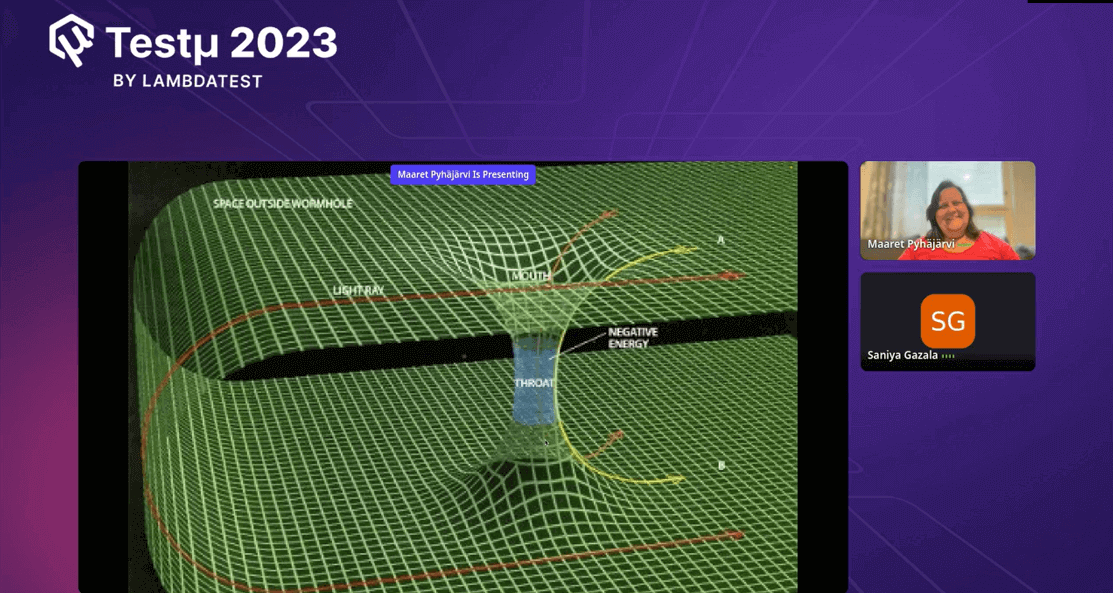
Slide 5: She reflected on a challenging period in her career, symbolized by the term “bottleneck.” She acknowledged negative experiences in a particular field and the realization that it wasn’t the right direction for her. Despite the difficulties, she overcame this phase, demonstrating her resilience.
While playing the game, Saniya kept in mind the rules of the game and maintained the time limit for each slide. She also held a perfect flow while talking about her journey.
Introducing Rhetoric- The Public Speaking Game
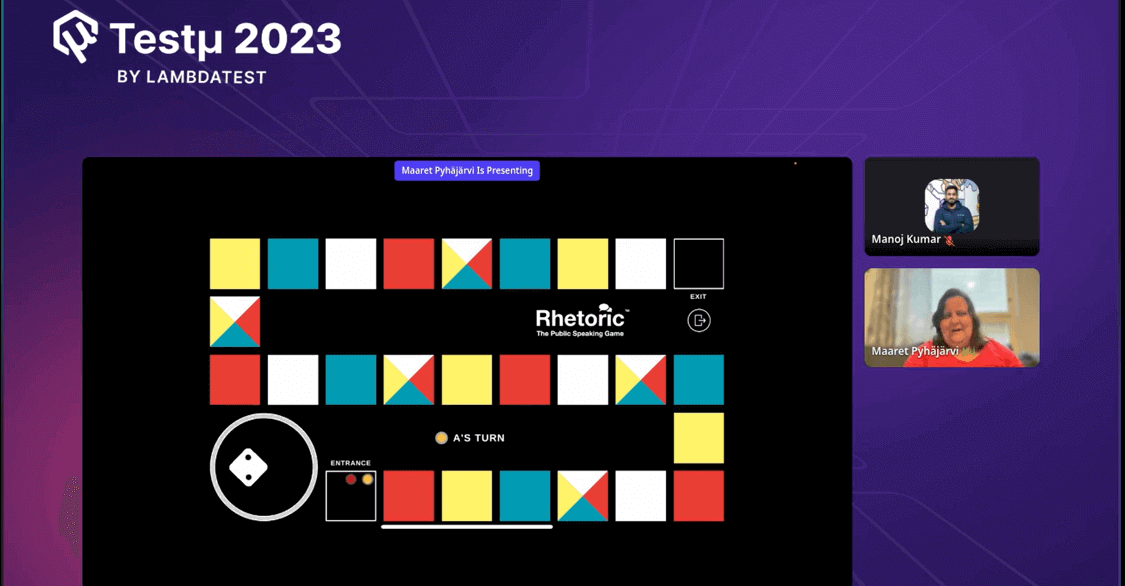
Moving ahead, Maaret introduced the concept of the game “Rhetoric,” which is a public speaking game based on the foundation of the Toastmasters group. It was initially a physical board game created to practice public speaking.
Explaining the rules of Rhetoric, Maaret detailed that there are two teams, Team A and Team B. Volunteers from the audience would participate, taking turns to play one round for either Team A or Team B, delivering one-minute talks in rapid succession. Volunteers would pick cards of different colors, each representing a specific type of prompt or constraint for their talk, like choosing a topic, answering a question, taking a challenge, or engaging in reflection.
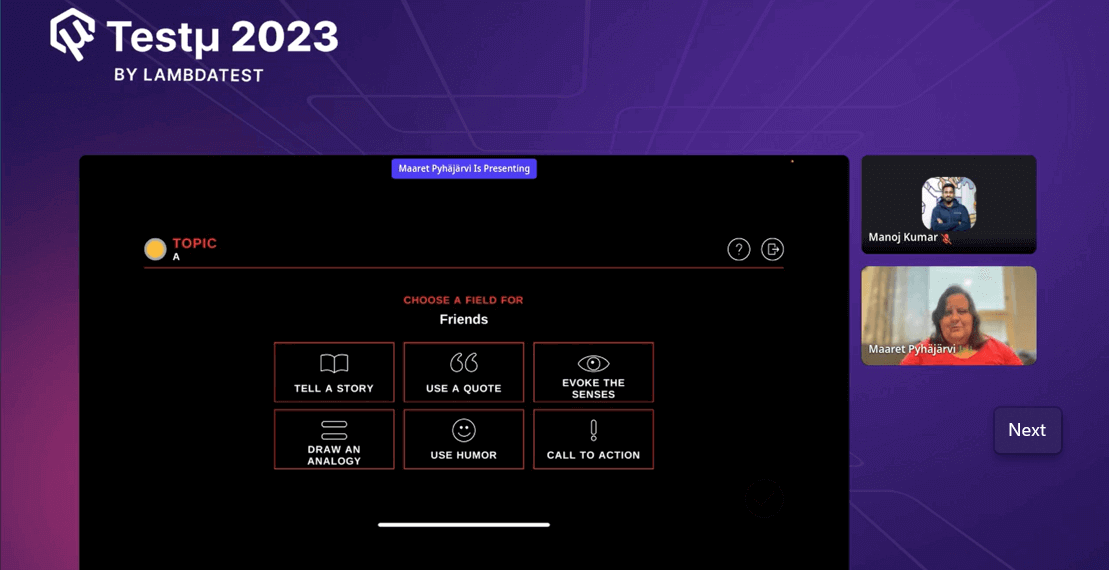
She highlighted that these constraints add depth and variety to the talks.
Demo
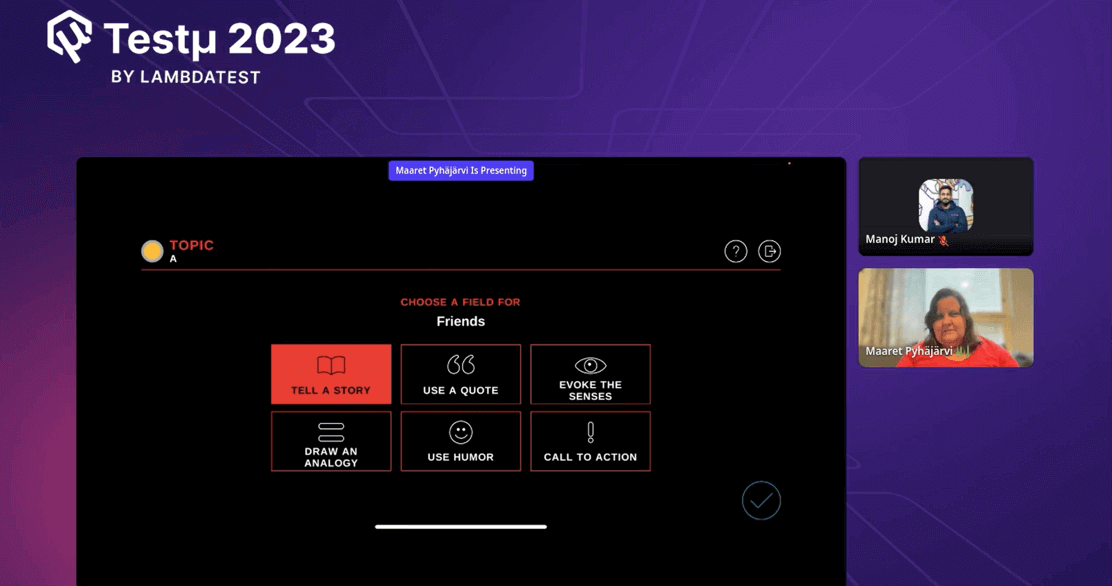
Maaret explained how she would play as the first volunteer for Team A. She drew a red card, indicating her topic: “All things testing plus friends.” She then had the option to choose a constraint for her talk. She chose to tell a story due to its effectiveness in delivering insights. She set a one-minute timer and delivered a short talk using the chosen constraint.
Maaret began her one-minute talk by recalling her experiences speaking at various conferences and meeting remarkable individuals. She shared an instance of attending the Selenium conference in India and meeting Manoj. She emphasized that they had become friends in the testing community. She narrated how their friendship grew from that initial meeting, describing how they collaborated on Selenium and various test automation projects.
Her demo showcased the game’s dynamic and creative aspect, highlighting the storytelling approach to deliver engaging and insightful talks within a limited time frame.
It was the time to move on with the participants and present them with the tasks and challenges.
1st Volunteer- The Whisper Challenge
Gunesh Patil was the first participant to take on the Rhetoric challenge. He rolled the dice to determine the challenge he would undertake. However, there seemed to be a brief confusion about whether he should choose a question or a challenge, and Maaret suggested they could try either. Ganesh then confirmed that he indeed wanted to take on the challenge.
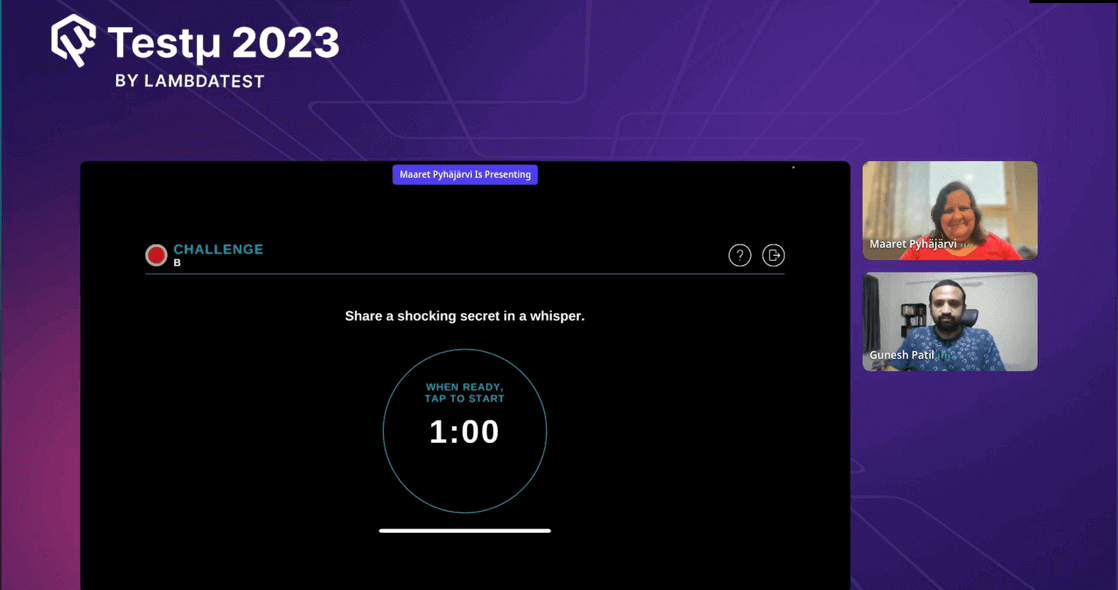
The challenge card presented to Gunesh required him to share a shocking secret in a whisper for one minute. He clarified whether he needed to whisper or could speak normally, and Maaret assured him he could. With the timer started, Gunesh began his one-minute challenge.
He shared his insight that effective testing doesn’t solely rely on the available tools but on one’s thinking, problem-solving approach, and implementation of those thoughts into the tools. He emphasized that while learning a tool might take a month, developing a thoughtful mindset takes time and consistent effort. Gunesh highlighted the significance of thinking and problem-solving skills in day-to-day testing, suggesting that tools are just enablers of this process.
In his challenge, Gunesh revealed a thought-provoking perspective on testing, showcasing how the Rhetoric game encourages participants to deliver insightful talks on various themes and constraints.
2nd Volunteer- Delivering a Talk in 1 minute
Panida Nironen was the next volunteer to participate in the Rhetoric game. Maaret rolled the dice for Panida, assigning her to Team A and determining the challenge she would undertake. Panida’s challenge was to deliver a talk about “excitement” with the constraint of a “call to action.” Maaret explained that she would have one minute to speak and encouraged her to take a moment to think and compose herself before beginning.
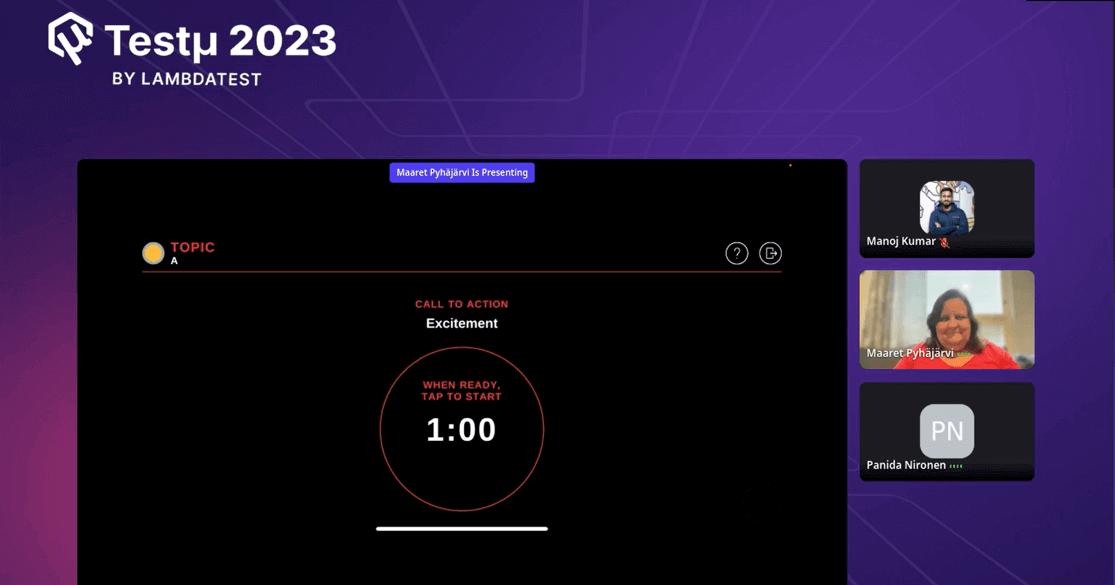
When Panida indicated her readiness, Maaret started the one-minute timer, and Panida began her impromptu talk.
She related the excitement in testing to Formula One racing, where everything needs to be tested thoroughly, much like drivers need to test and know all the security rules. She drew a parallel to testing in the engineering field, highlighting the uncertainty of encountering bugs and the excitement of reporting them to developers while maintaining effective communication. Panida emphasized the importance of teamwork and quality assurance, mentioning that the unknown outcomes and the collaborative aspect of testing contribute to the excitement of the field.
Panida’s one-minute talk showcased her ability to quickly think on her feet and deliver an engaging and insightful message about excitement in testing, incorporating the call to action element effectively.
3rd Volunteer- Talking on a Topic for 1 minute
Himanshu Sheth was the next participant in the Rhetoric game and was assigned to Team B. He had the freedom to talk about anything within his one-minute challenge. Maaret initiated the one-minute timer, and Himanshu began his impromptu talk.
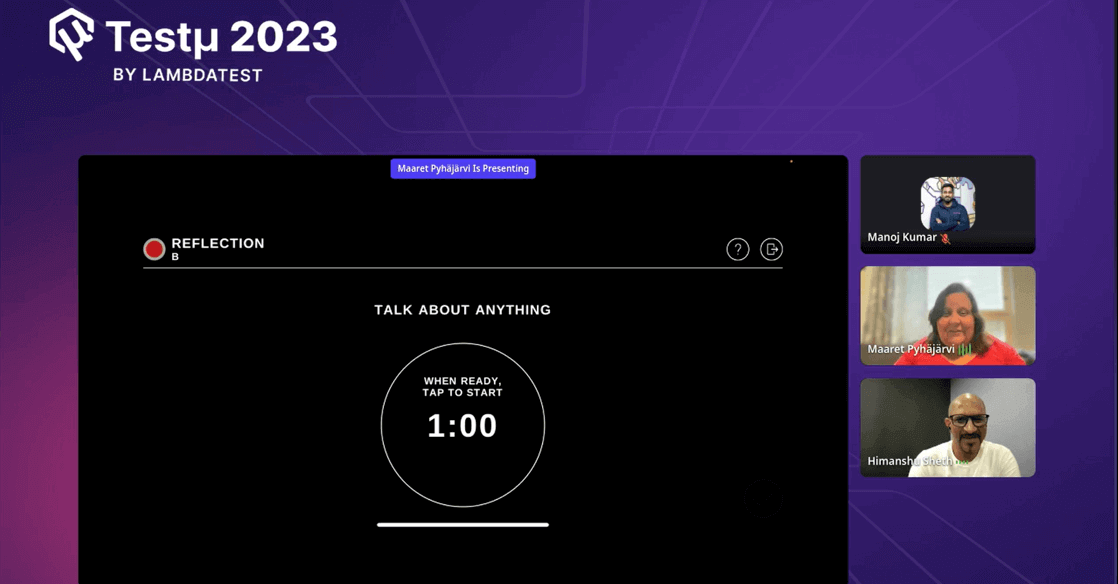
He shared his career journey, mentioning that he started as an embedded developer at companies like Samsung and Motorola. However, he realized he wasn’t enjoying his work despite the financial benefits. Later, he found a passion for content creation, mainly writing blogs. This new direction brought about a positive change in his life, and he emphasized that age should not be a barrier to making career changes. He encouraged everyone, regardless of their age, to pursue their passions and make positive changes in their lives.
Himanshu’s talk demonstrated his ability to craft a coherent and meaningful message within one minute, delivering a motivational message about pursuing passions and making positive career shifts at any age.
4th Volunteer- The Reflection Challenge
Ahtisham Ilyas was the final volunteer to play the Rhetoric game. Maaret rolled the dice and announced that Ilyas got a four, leading him to receive the “reflection” challenge. Ilyas had the freedom to talk about anything within his one-minute challenge: to reflect on a topic. Maaret asked Ilyas to start whenever he was ready.
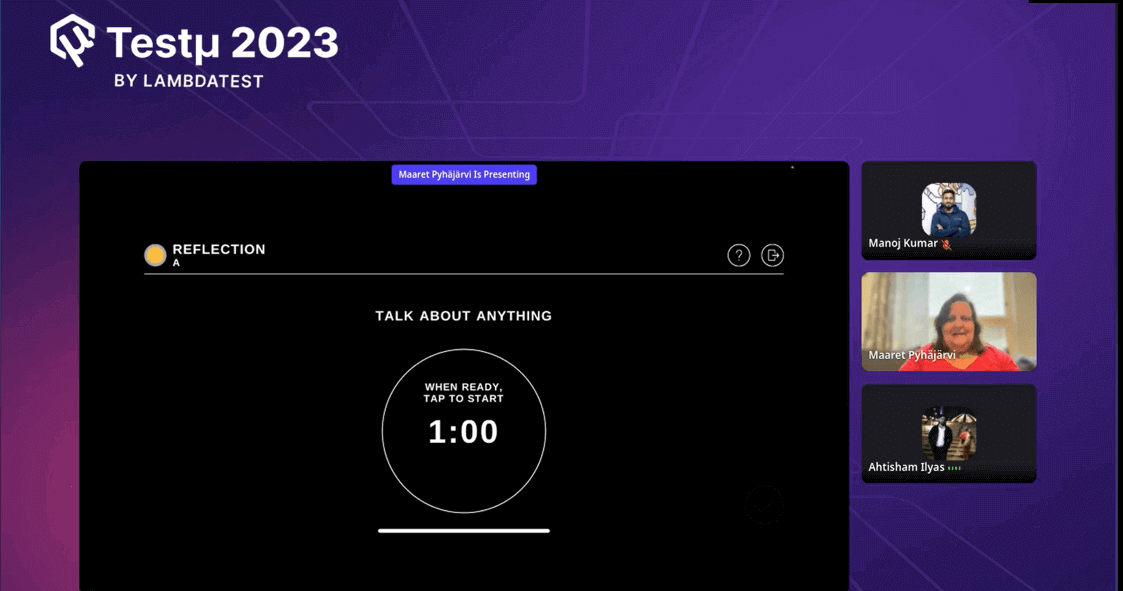
Ilyas began by sharing an incident related to communication in software testing and how it involved resolving a bug with a developer. He mentioned that the incident also included an element of friendship. In the incident, he initially faced challenges in communicating with the developer after reporting an issue to their manager. However, by directly communicating with the developer, he resolved the issue and improved their working relationship. He emphasized the importance of effective communication in resolving issues and fostering collaboration. Ilyas concluded by expressing gratitude for the opportunity to discuss the significance of communication.
Through his talk, Ilyas was able to highlight the importance of effective communication in the context of software testing and collaboration.
While concluding the session, Maaret explained that Rhetoric Game could be played in various group settings and suggested that it might be best suited for smaller groups within organizations. She thanked and appreciated the six volunteers who took part in delivering talks, praising their bravery and noting their impressive performances.
Maaret then mentioned that while delivering longer versions of talks, participants could work on improving certain aspects, such as their choice of words or phrasing. She highlighted that the game offers different options for participants to explore.
Time for Some Q&A
- How could you delve into crafting compelling testing narratives that would enhance stakeholder engagement, empower decision-making, and foster a quality culture throughout the development journey?
- Can you share a captivating example from your talk that illustrates how effective communication and collaboration contribute to refining test practices and ensuring software excellence?
Maaret: When it comes to making testing stories that engage stakeholders and promote quality, it’s a common challenge, and to tackle it, you try different things and see how your audience reacts. If they like it, you do more of that. If not, you change your approach, maybe use visuals or send a team. Working together to create stories and trying different methods can help engage stakeholders and spread a culture of quality.
Maaret: I believe effective communication and collaboration involves speaking up about what you care about and finding like-minded people. Once, I was sitting next to a developer, letting them test without instructing them. This showed that developers can test effectively when given the space. You can also use storytelling to explain complex concepts, like metrics, where attaching a story to numbers is important for understanding.
Do you have more questions? Drop them on the LambdaTest Community.
Got Questions? Drop them on LambdaTest Community. Visit now





